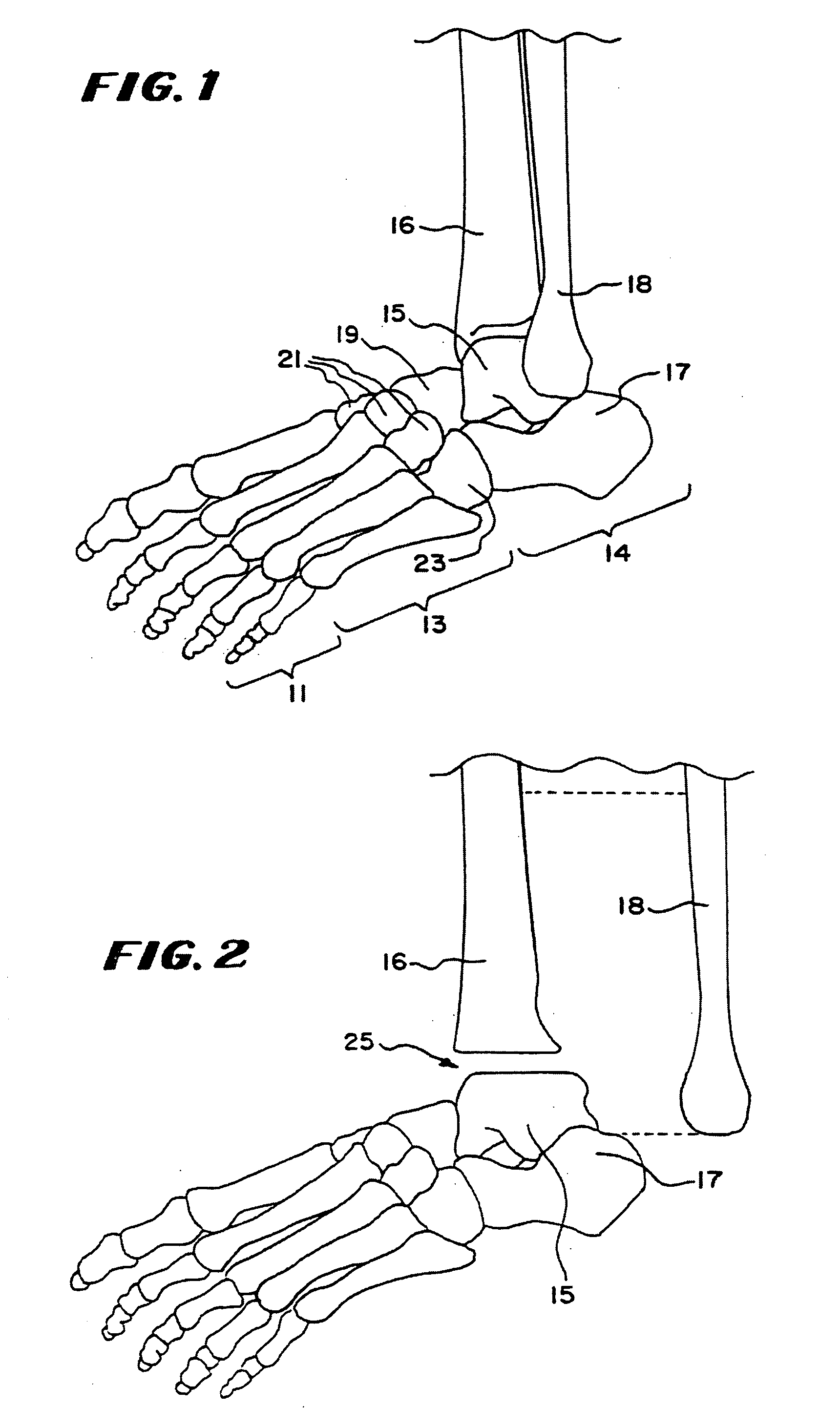Intramedullary guidance systems and methods for installing ankle replacement prostheses
a technology of intramedullary guidance and implants, applied in the field of implants and systems, can solve the problems of increasing the cost of surgery, so as to reduce the occurrence of subsidence and aseptic loosening
- Summary
- Abstract
- Description
- Claims
- Application Information
AI Technical Summary
Benefits of technology
Problems solved by technology
Method used
Image
Examples
Embodiment Construction
[0042] Referring to FIG. 1, the foot comprises fourteen phalanges or toe bones 11 connected to the metatarsus bones 13. There are also seven tarsal bones 14, of which the talus 15 supports the tibia 16 and the fibula 18, and the heel bone or calcaneus 17. Of the tarsal bones, the talus 15 and the calcaneus 17 are the largest and are adjacent to each other. The other tarsal bones include the navicular 19, three cuneiforms 21, and the cuboid 23.
II. Intramedullary Guidance System
[0043] In performing a total ankle replacement procedure, it is desirable to cut away bone on the inferior end of the tibia 16 and / or the superior end of the talus 15, to thereby form a planar surface or surfaces 25, as FIG. 2 and FIG. 2a shows (in FIG. 2a, the tibia 16 and talus 15 have been resected with the removed portions shown in phantom lines, leaving two planar surfaces 25).
[0044] A planar surface increases the amount of bone available for the fixation of a selected prosthetic...
PUM
| Property | Measurement | Unit |
|---|---|---|
| diameter | aaaaa | aaaaa |
| diameter | aaaaa | aaaaa |
| size | aaaaa | aaaaa |
Abstract
Description
Claims
Application Information
 Login to View More
Login to View More - R&D
- Intellectual Property
- Life Sciences
- Materials
- Tech Scout
- Unparalleled Data Quality
- Higher Quality Content
- 60% Fewer Hallucinations
Browse by: Latest US Patents, China's latest patents, Technical Efficacy Thesaurus, Application Domain, Technology Topic, Popular Technical Reports.
© 2025 PatSnap. All rights reserved.Legal|Privacy policy|Modern Slavery Act Transparency Statement|Sitemap|About US| Contact US: help@patsnap.com



